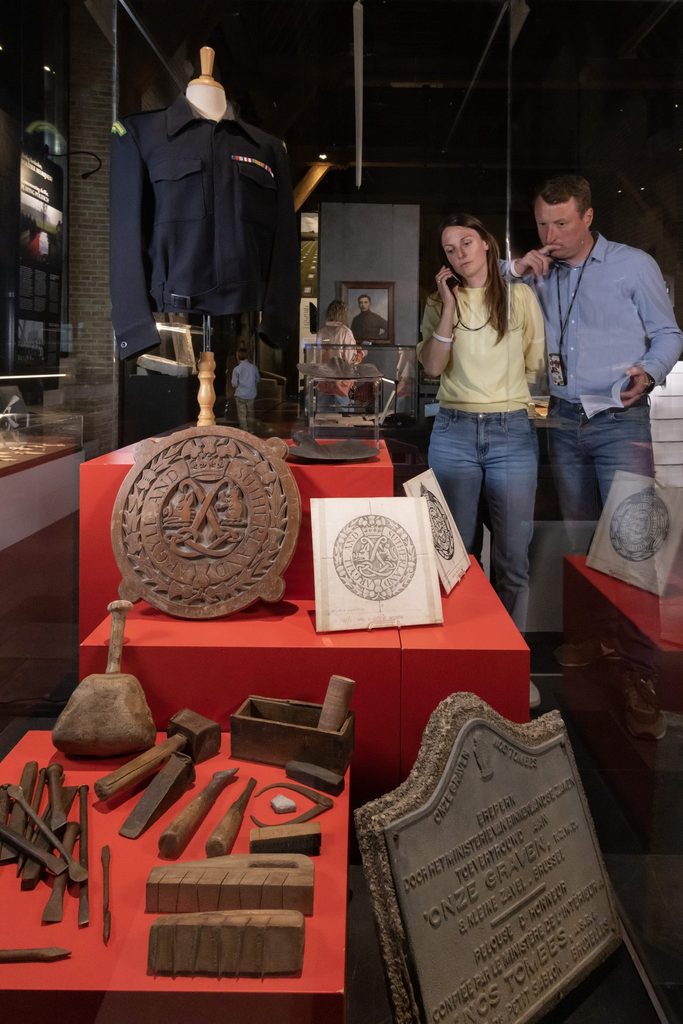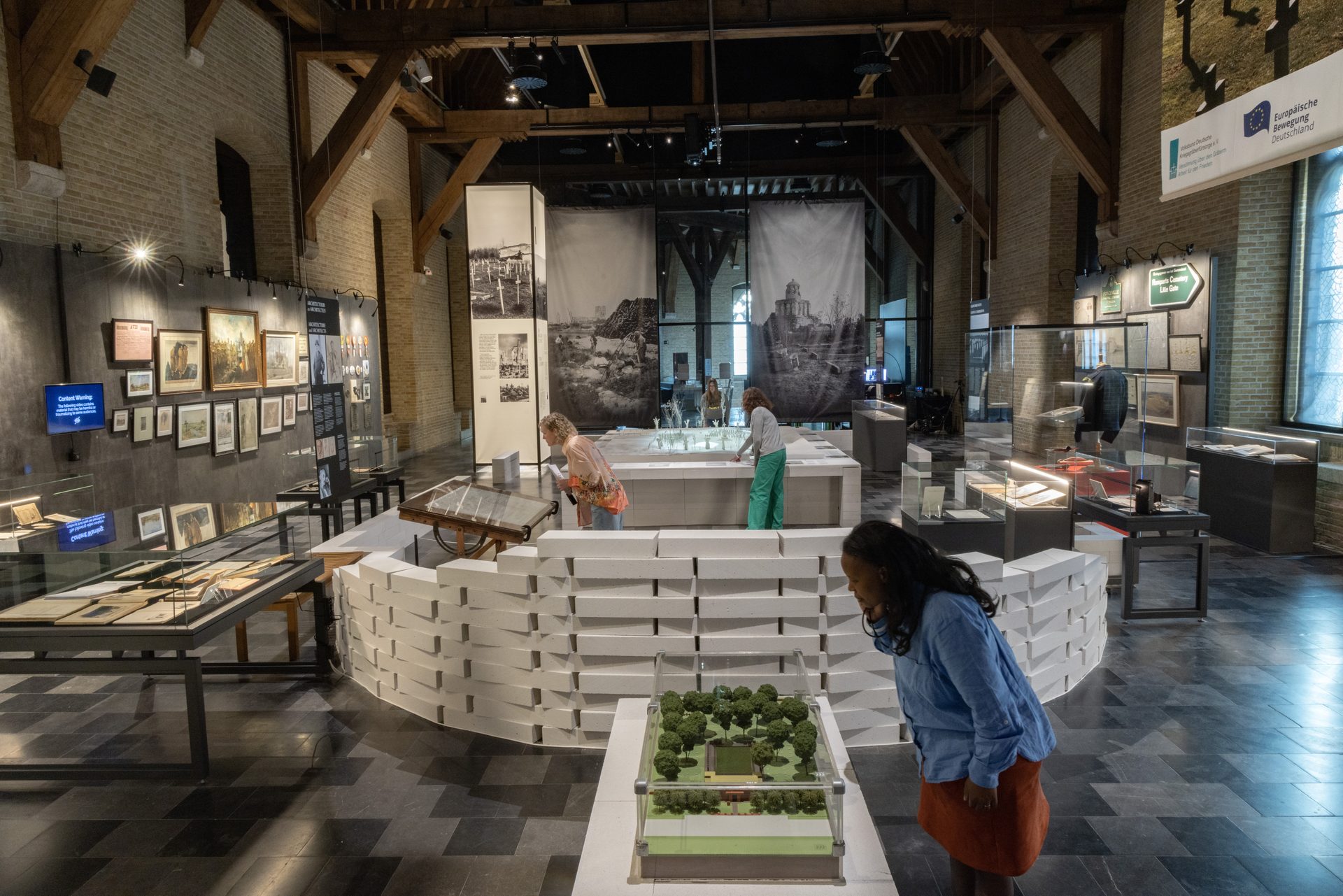The focus of the museum is on the human war experience, presenting hundreds of authentic objects and images in an experience-orientated setting. The historical story of World War I is presented from different perspectives, such as the stories of soldiers and citizens, of men and women, adults and children.
In Flanders Fields Museum confronts the visitor with the consequences of The Great War and its relevance today. The multidimensional look of the museum ensures that every visitor – young or old – can empathize with the people who were there at the time.
New international exhibition: For Evermore: Cemeteries of the First World War
“Can there be more potent advocates of peace upon earth than this massed multitude of silent witnesses to the desolation of war?” - British King George V
On the 30th of June 2022, more than a 100 years after his death in 1917, the Canadian private John Lambert was laid to rest on New Irish Farm Cemetery, near Ypres, in the presence of his relatives. Although they never met him, they still attach great importance to his commemoration. It proves that even after the passing of the last veterans and the people who knew them personally, the emotional connection with the former battlefields and the people who died there is still strong. You can see the burial ceremony of private John Lambert in a monumental video in the expo.
Today, that landscape of Flanders Fields with its numerous military cemeteries remains as one of the last witnesses of the Great War. On those cemeteries, the Stone of Remembrance claims ‘Their name liveth for evermore’. But is that possible? Is there no expiration date on commemoration?
These questions are at the heart of the new temporary exhibition ‘For Evermore: Cemeteries of the First World War’. It reveals the stories kept alive by the Commonwealth, French, Belgian, German and American military cemeteries in Flanders Fields. Not only do they tell the personal histories of the dead who are buried there, but their location, architecture and history reveal a lot of information about the Great War as well. You learn how to ‘read’ these memorial sites.
Thanks to a thought-provoking presentation, the exhibition takes you on a journey that combines unique objects and personal stories with interactive and multimedia set-ups. A drone video show the great diversity in construction, shape and implantation in the landscape. Listen to more in-depth information via an audio guide or follow a customised audio route with your children.
The exhibition ‘For Evermore’ is the ideal starting point to explore the former war landscape and military cemeteries of Flanders Fields.

For Evermore: Cemeteries of the First World War (c) Jan D'Hondt
Practical information, opening times and entrance rates can be found on the museum website.
A visit to the exhibition is included in the museum ticket, but the exhibition can also be visited separately.
‘For Evermore’ is organised within the theme year LANDSCAPES | Feel Flanders Fields, coordinated and financed by Westtoer and Visit Flanders

